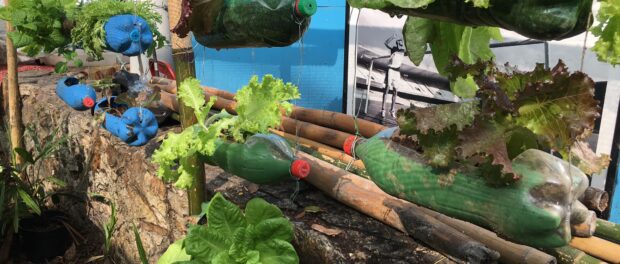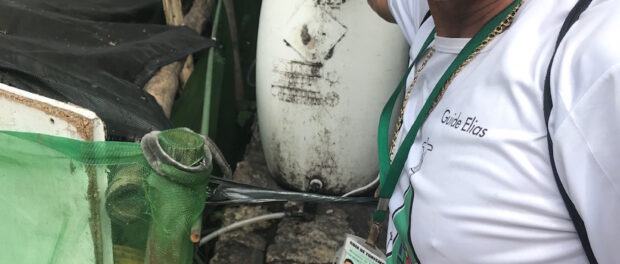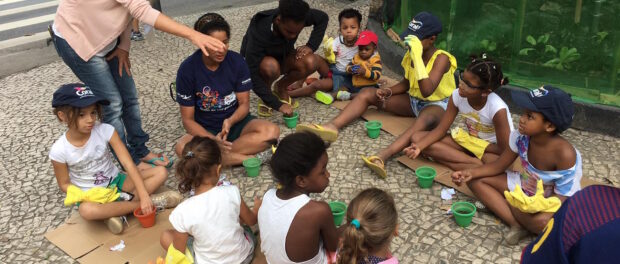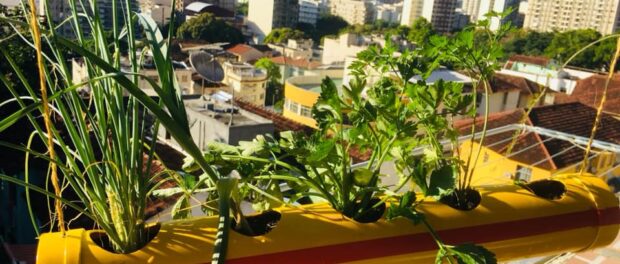
Initiative: Santa Marta Community Garden
Contact: Community Garden Facebook | Planting Ideas Facebook | Website | Email
Year Founded: 2017
Community: Santa Marta, South Zone
Mission: To create a community garden that fosters environmental awareness and responsibility and produces healthy food
Public Events: Gardening workshops for children of all ages
How to Contribute: Schedule a tour of the Santa Marta favela with community leader José Elias Duarte to see the gardens, irrigation system, and more, and financially support the initiative.
A craftsman, tour guide, gardener, community organizer, and activist, José Elias Duarte is a man of many talents. Throughout his life, he has been lucky enough to learn these various skills from others. To him, sharing one’s expertise is a necessity: “If you know something, you have to pass that knowledge on to everyone else,” Duarte states. He runs the Santa Marta Community Garden with the same attitude. The garden is located in Corumba Plaza, adjacent to Rua São Clemente in Botafogo at the entrance of the Santa Marta favela.
Duarte and his parents have been residents of Santa Marta for his entire life. They know the hardships that the community has faced in the past and continues to face. One of the greatest challenges in Santa Marta is the lack of public services and general awareness with regard to waste disposal, according to Duarte. During heavy rains like those that took place in February, “debris and sanitary waste end up scattered” throughout the favela’s steep slopes, he says.
The favela of Santa Marta is located in Rio’s South Zone, an area with one of the highest costs of living in Latin America. As a result, many residents of the community struggle to afford a healthy, balanced diet. Beyond poor access to affordable nutritious food, Duarte believes that “many residents lack access to information” about what truly makes up a highly nourishing diet.
With a focus on sustainability and the open exchange of information, Duarte seeks to address these challenges. He was originally inspired to start the initiative in 2017 because “so few people [in Santa Marta] had knowledge [of horticulture or gardening techniques].” By sharing his knowledge and expertise with others, he eventually hopes to see gardens in every currently idle or underutilized space in the community. He believes that this would help to not only bring the community together but also enrich residents’ diets and their understanding and connection to nature.
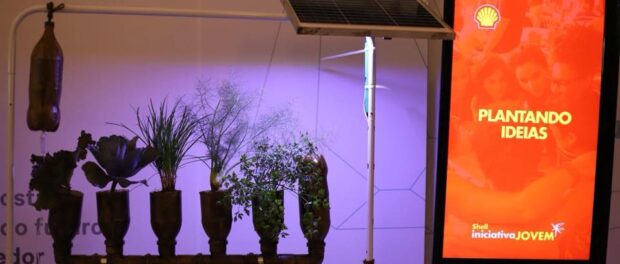
Recently featured in the French urban agriculture magazine De Ville En Ville, Duarte has created a simple mechanized solar-powered irrigation system that has the potential to completely revolutionize urban gardening and farming not only in Santa Marta but also in other communities in Rio and beyond. His system starts with a small solar panel, approximately 40×40 centimeters. The solar panel powers a solenoid valve, which, controlled by humidity sensors in the soil, releases a specific amount of trapped rainwater into the garden via a porous hose. As long as the garden can be kept safe from hungry critters, it will thrive with very little maintenance or additional costs. “I think it’s really cool!” Duarte states with pride. “With my system, there are really no expenses [to maintain] a functioning garden.”
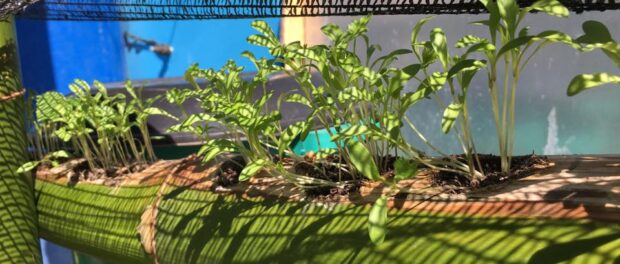
With the help of ten to fifteen local volunteers, Duarte recently harvested and replanted the garden. Currently, the garden contains bananas, kale, lettuce, onion, okra, squash, and various flowers and herbs that he received from foreigners who participated in his guided tours of Santa Marta. Duarte tends an additional garden in his home, which operates on the same mechanized system as that used in the community garden.
The vegetables, fruits, flowers, and herbs grown in Duarte’s gardens help to provide the community with affordable access to healthier food options, while also eliminating waste created from food packaging. “Sustainability is everything that we do here,” Duarte proclaims. “Together, we will care for our dear Earth with our own means and resources.”
Duarte hopes that the presence of more sustainable gardens in the favela will make a big impact on the community’s youth. With help from volunteers, Duarte runs various planting workshops for kids of different ages. These workshops, which he says “are more like games” for the youngest children, aim to teach respect for nature through the understanding of it. They also teach horticultural techniques, with the intent that these students and their families will produce gardens of their own. Duarte believes that “the kids are our future” but that “without the environment, there is no future.”
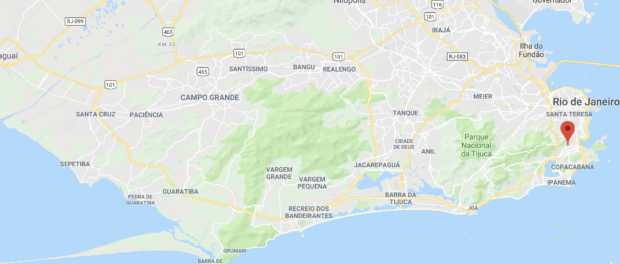
*The Santa Marta Community Garden is one of over 100 community projects mapped by Catalytic Communities (CatComm), the organization that publishes RioOnWatch, as part of our parallel ‘Sustainable Favela Network‘ program launched in 2017 to recognize, support, strengthen, and expand on the sustainable qualities and community movements inherent to Rio de Janeiro’s favela communities. Check out all the profiles of mapped projects here.

